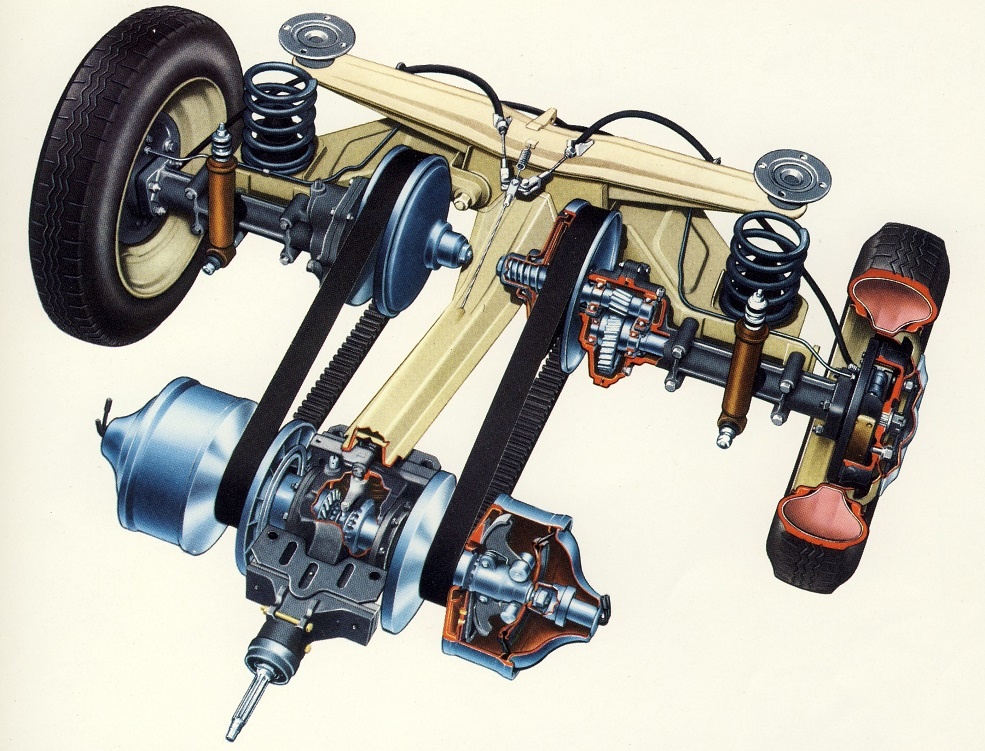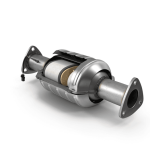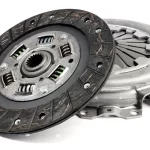The two most common types of transmissions are manual and automatic. But there is a third type called a continuously variable transmission (CVT). CVTs have been around since the late 1980s but are now more common than ever because they typically provide better fuel economy than other kinds of transmissions.

How Does a CVT Work?
Technically, a CVT is an automatic transmission because the driver isn’t required to shift between the forward gears or operate a clutch pedal manually. But there are fundamental differences in both form and function between the two.
Unlike a traditional automatic (or manual transmission, for that matter), a CVT does not have a fixed number of preset gears. Instead, it uses an unlimited number of gear ratios to accommodate the driving style and conditions at any given moment. Because it allows seamless changes without any hard shift points, a CVT transmission is often referred to as “single-speed” or “shiftless.”
A CVT achieves this infinite gear ratio flexibility by using two opposing cone-shaped pulleys with a chain or belt that runs between them. This setup is very similar to the way a chain operates across the gears of a bicycle.
One cone is connected to the engine output shaft, while the other cone directs power to the driveshaft and drive wheels. Gear ratios change as the pulleys move closer and further apart, causing the chain or belt to move up and down the two cones’ sides. This movement increases or decreases the diameter of the chain or belt, which alters the gear ratio based on the power needed. These real-time changes happen continually as the car is moving.
CVT Pros and Cons
Automakers increasingly use CVTs due to several benefits they provide:
- Increased fuel economy. CVTs are more efficient than standard automatic transmissions and are commonly utilized in hybrid powertrains and smaller cars to maximize the number of miles you can travel on every gallon of gas.
- Responsive acceleration. Due to its variable characteristics, a CVT can typically find the proper gear ratio much faster than an automatic transmission at virtually every speed ranging from off-the-line to highway passing.
- Smoother driving character. The absence of hard shift points means a CVT delivers more consistent performance across the engine’s rev band. There are no abrupt downshifts or lags in acceleration as experienced with automatic and manual transmissions.
While CVTs offer some clear advantages for certain car owners, they are not for everyone. Some drawbacks include:
- Lack of character. There is little to no shifting feel which results in a driving experience that can be bland and uninteresting.
- Noisiness. Many drivers find CVTs to be louder and whinier than traditional automatic transmissions. Under hard acceleration, such as when entering a freeway, they tend to drone. This trait contributes to a less enjoyable driving character.
- Lack of high-performance capability and durability. Although CVTs offer better-than-average acceleration in everyday driving situations, they are not ideal for high horsepower applications or sustaining high speeds. For that reason, CVTs are typically not utilized in sports cars.
- Higher repair costs. Not only do CVTs cost more to fix or replace, they generally do not last as long as traditional automatic transmissions.
Signs of CVT Failure
Whether you are an existing owner of a vehicle with a CVT or a shopper test driving a used vehicle equipped with this type of transmission, there are some telltale signs that a CVT transmission might be failing:
- Shifting lag. A hesitation, brief pause, or lurching when the vehicle shifts between the park, drive and reverse.
- Slippage. The vehicle momentarily loses power during an acceleration event that should otherwise be constant, seamless, and increasing in speed.
- Fluctuations in engine revs. Inconsistent changes through the rev band while driving the vehicle at a constant speed.
- Unusually loud noise. Excessive whirring during acceleration, beyond the typically higher sound level of a CVT.
conclusion
CVTs are simpler and more adaptable than traditional transmissions, offering impressive fuel economy and seamless performance through varying driving conditions. However, some drivers don’t like the way they feel or sound, and they can be expensive to repair or replace.
Automakers are aware of these negative characteristics and are striving to improve CVTs with advancements in how they feel and sound and in durability. Therefore, modern CVTs are poised to gain greater acceptance among car buyers while helping car companies make their vehicles more fuel-efficient.









